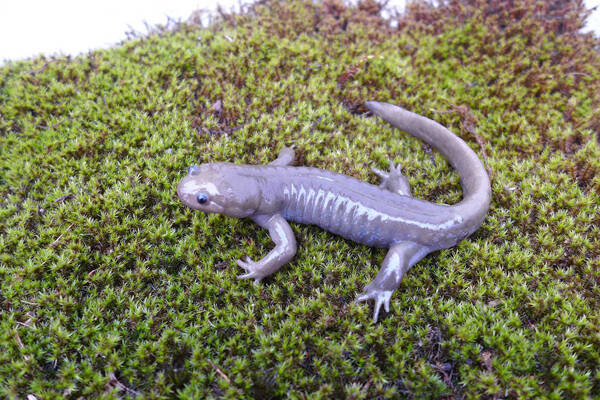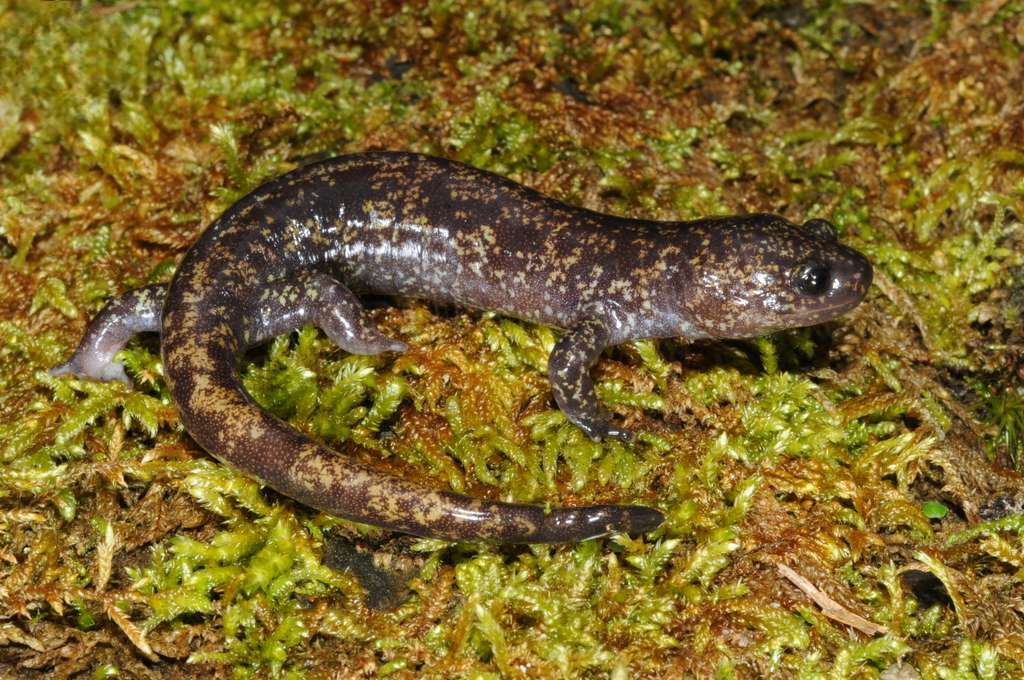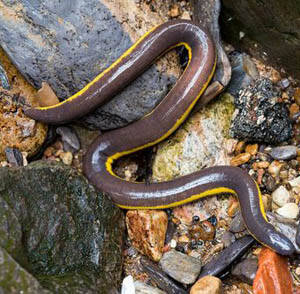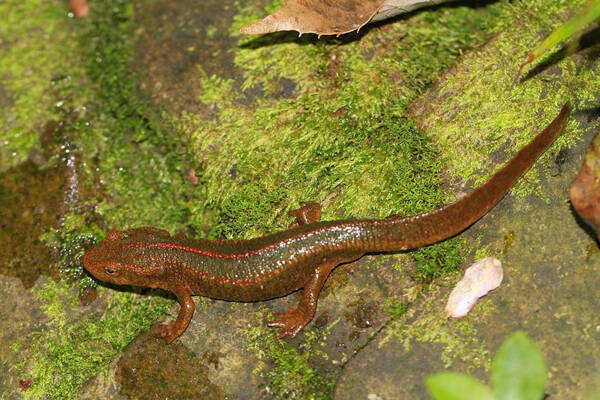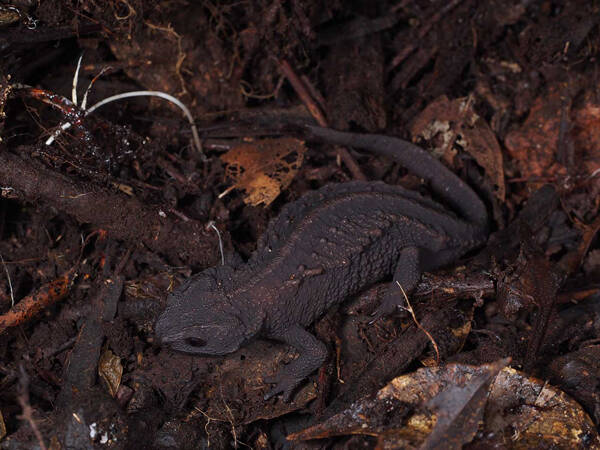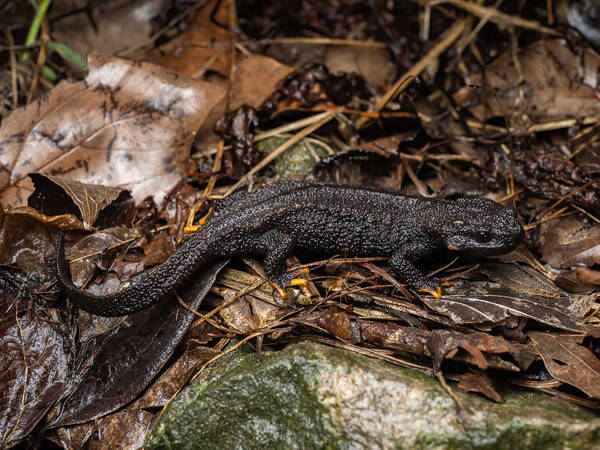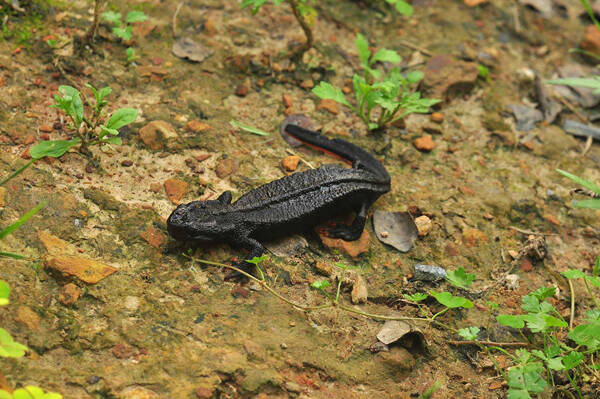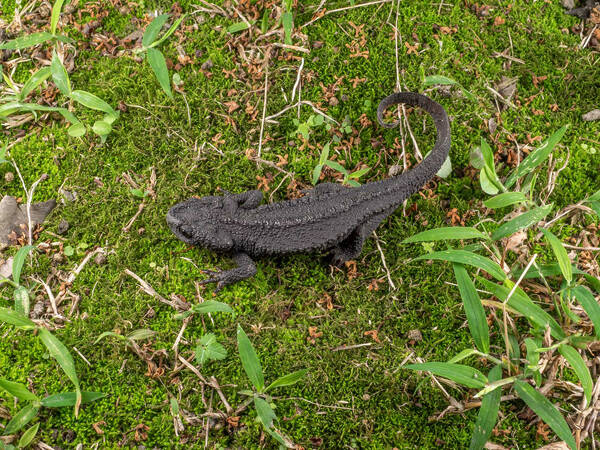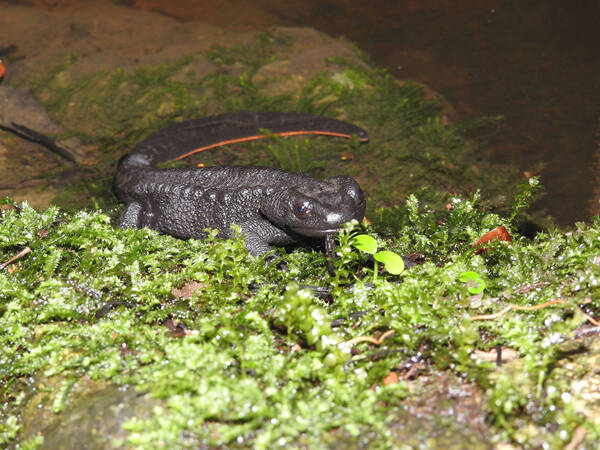Hynobius maoershanensis
IUCN
LCBasic Information
Scientific classification
- name:Hynobius maoershanensis
- Scientific Name:Hynobius maoershanensis,Maoershan Hynobiid
- Outline:Urodela
- Family:Caudata Hynobiidae
Vital signs
- length:136.1-160.2mm
- Weight:
- lifetime:
Feature
The head is large and slightly flat, and its color varies when alive. When in water, the back is black or yellow-green. When out of water, the back of the body is yellow-green or light purple-brown with no spots.
Distribution and Habitat
Endemic to China, distributed in Guangxi (Longsheng, Xing'an).
Lives in mountain swamps and surrounding areas at an altitude of 1978-2015m, with lush vegetation in the habitat.
Appearance
The head is relatively large and slightly flat, with the length of the head greater than the width of the head; the snout is rounded and has no labial folds; there is no halodeam, and the row of vomerine teeth is V-shaped. The trunk is cylindrical and flat on the ventral side; the base of the tail is cylindrical, gradually flattened laterally, the tail muffle is not obvious, and the tail tip is round. The back of the body is generally black, light purple-brown or yellow-green, without stripes; the sides and ventral surface of the body are gray, with many small white spots scattered.
Details
The Maoershan Small Salamander lives in the swamps and surrounding areas of the mountainous areas with an altitude of 1978 to 2015 meters. The vegetation nearby is mainly southern hemlock and mountaintop dwarf forests. It likes to eat a lot of small invertebrate aquatic organisms, such as earthworms and stone moth larvae. When encountering interference such as light, sound and water splashing, the Maoershan Small Salamander will quickly choose cover or humus soil as a hiding place.
The Maoershan Small Salamander only breeds in 3 still water pits. The female salamander lays the egg sac in a still water pit with clear and transparent water and thick bottom mud. The water depth of the pit is 20 to 50 cm. The salamander laid eggs at noon in mid-November 2005, when the water temperature was about 7℃. The breeding season of the salamander is relatively long, from early November to February of the following year. A female salamander lays a pair of egg bags, which are no longer than 200 mm and are arc-shaped. There are about 41 eggs (37-45, n=4) in one egg bag. After laying eggs, the female salamander leaves the spawning ground, while the male salamander remains in the spawning ground to protect the eggs. The salamander only enters the pond to mate and lay eggs during the breeding season; it lives on land in other seasons and it is difficult to find its traces. Local people occasionally see it when hoeing the fields.
The threats to the Maoershan small salamander mainly come from human activities, and the threats to different areas are different. In the breeding area, it is mainly affected by the construction of restaurants and the development of tourist attractions. The hardening of the road surface, a large amount of construction waste and alkaline construction wastewater discharged into the lake directly affect their habitat. Frequent human activities have also caused serious trampling of the vegetation environment around the construction site, affecting the habitat environment of the Maoershan Small Salamander to a certain extent.
Listed in the first level of the "List of National Key Protected Wildlife in China".
